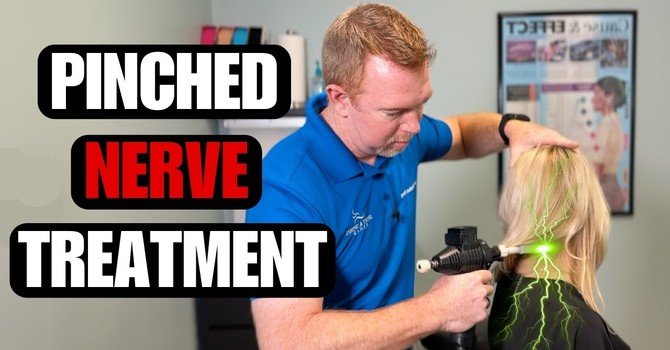Confused whether you should use ice or heat for your back pain? In today’s video, Jupiter Chiropractor, Dr. Nevel, teaches you when you should ice, when you should heat, how long you should do each for, as well as a few tips and suggestions to help reduce your pain.
Heat or Ice Back Pain – Video Transcript:
Hey guys and gals, what’s cracking? It’s Dr. Nevel, aka Dr. Ginga Ninja, aka the Firecracker Chiropractor. And on this channel, we do how to videos, chiropractic adjustment demonstrations, as well as explaining different types of injuries and the treatments needed to get you better fast.
If you’re new here to the channel, consider subscribing so you never miss one of our videos. As always, any links, products, or show notes can be in the description below.
With that being said, let’s jump right into the content and answer the age-old question of “Should you heat, or should you ice your back pain?” In order to determine this, you need to figure out, First, is your pain from an acute injury or is it from a chronic injury?
Acute injuries are usually caused by a specific injury where you know the cause and they’re associated with swelling and inflammation.
ICE
The standard treatment for acute injuries is the pneumonic R.I.C.E. which stands for rest, ice, compression, and elevation. If your injury is stable, it’s also a good idea to apply some gentle range of motion so it will help reduce scar tissue formation.
Acute injuries also respond to ice really well because it helps constrict the blood vessels and the inflammation. Ice is also a really good analgesic because it numbs the sore tissues and reduces the pain signals that are sent to the brain.
In general, ice is most effective within the first 48 hours of an injury. There are a few different ways to use ice but the most popular are ice baths, ice massage, and cold compresses. Cold compresses are the super easy to use because you can simply use ice in a bag, a frozen bag of peas, or buy a reusable ice pack. The reusable ice packs that we use at our practice can be found in the description below. As far as timing, ice approximately for 10-20 minutes with at least a 1 hour break between icings. To prevent frost bite, make sure you put a barrier between the ice and your skin which can simply be a thin towel, a t-shirt, or pillowcase.
Unlike acute injuries, chronic injuries are defined as injuries that have lasted longer than 12 weeks and often respond really well to heat.
HEAT
As long as your back pain isn’t acute, back pain normally responds well to heat because heat helps dilate blood vessels, it relaxes tight and sore muscles, and reduces the pain associated with arthritis.
There are a few different types of heat can be used including electrical heat, moist heat, hot baths, and paraffin wax.
Heat should be used or approximately 20 minutes per day anywhere from 3-5 times per day.
Never use heat on areas that are red, swollen, or inflamed, that have any open wounds, or that are numb. Never use extreme heat or you’re at risk of burning your skin.
Alternating heat and ice
In some cases, you can alternate heat and ice to help reduce pain from osteoarthritis and sore muscles from working out. In these cases, heat the injured area for approximately 10-20 minutes, followed by ice for approximately 10-20 minutes. What the heat does is, helps dilates the blood vessels and relax the tight and sore muscles and then the ice constricts the blood vessels, reducing the inflammation. What this does is, creates fluid movement in and out of the injured area and brings nutrients to the area to help heal the injury.
Summary
So, in summary, use cold therapy within the first 48 hours of an injury, especially if there is any swelling. The ice will help reduce blood flow, reduce inflammation, and act like a natural pain reliever.
Use heat if you need to relax muscles, promote blood flow, and remember it is best for chronic injuries.
Alternate heat and ice if you are looking to promote fluid movement and reduce the pain associated with exercise induced muscle soreness.
Don’t forget, never apply ice directly to the skin and never use extreme heat.
And as a reminder, every injury is different so make sure you listen to your body. If ice and heat don’t help, stop and get the advice of an expert.
Question of the day
So now for the question of the day, what has your experience been using ice and heat? Have you found certain conditions respond better with heat and some better with ice? Let us know in the comments below.
And if you found this video helpful, punch that like button, subscribe, and we’ll see you in the next video.






